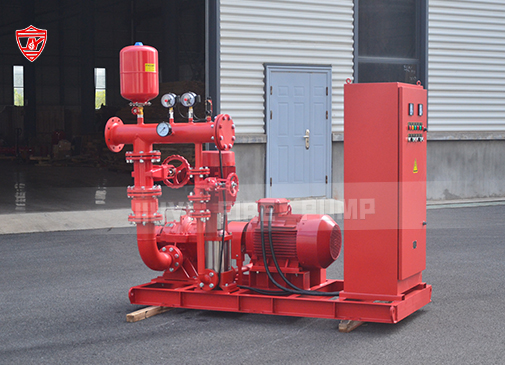Fire pumps play a crucial role in fire protection systems, ensuring reliable water flow during emergencies. However, suction loss can lead to severe performance issues, reducing water pressure and endangering lives and property. Understanding the causes of suction loss and how to prevent it is essential for maintaining fire pump efficiency and compliance with NFPA 20 standards.

Common Causes of Suction Loss
-
Inadequate Water Supply
- A low or unstable water source can cause suction problems. Ensure that your fire pump is connected to a reliable water supply with sufficient volume and pressure.
-
Blocked or Clogged Suction Lines
- Debris, corrosion, or sediment buildup in the suction piping can restrict water flow. Regularly inspect and clean the suction lines to prevent blockages.
-
Improper Pipe Sizing
- Suction pipes that are too small can create excessive friction loss, reducing pump efficiency. Follow manufacturer recommendations and NFPA 20 guidelines for proper pipe sizing.
-
Air Leaks in Suction Line
- Even small air leaks can cause cavitation, leading to reduced pump performance and potential damage. Inspect all fittings, gaskets, and valves for air leaks and ensure tight seals.
-
Excessive Suction Lift
- If the fire pump is positioned too high above the water source, it may struggle to maintain proper suction. Keep the pump location as close to the water source as possible.
How to Prevent Suction Loss in Fire Pumps
✔ Maintain a Reliable Water Source
- Ensure an adequate and stable water supply with sufficient pressure and volume.
- Install a dedicated reservoir if the municipal water supply is unreliable.
✔ Perform Regular Inspections
- Schedule routine maintenance to check for blockages, corrosion, and sediment buildup in suction lines.
✔ Check for Air Leaks
- Conduct pressure tests to detect air leaks in the suction piping and repair any weak points immediately.
✔ Ensure Proper Piping Design
- Follow NFPA 20 standards for pipe sizing and layout to minimize friction loss.
- Use smooth bends instead of sharp angles to improve water flow.
✔ Minimize Suction Lift
- Position the pump as close to the water source as possible to reduce suction lift.
✔ Install a Jockey Pump
- A jockey pump helps maintain system pressure, preventing the main fire pump from experiencing suction-related issues.
Conclusion
Preventing suction loss in fire pumps is essential for maintaining a reliable fire protection system. By ensuring a stable water supply, inspecting piping regularly, and following proper installation guidelines, you can enhance pump efficiency and safety. Regular maintenance and adherence to NFPA 20 standards will help keep your fire pump in peak condition, ensuring it operates effectively in emergencies.
